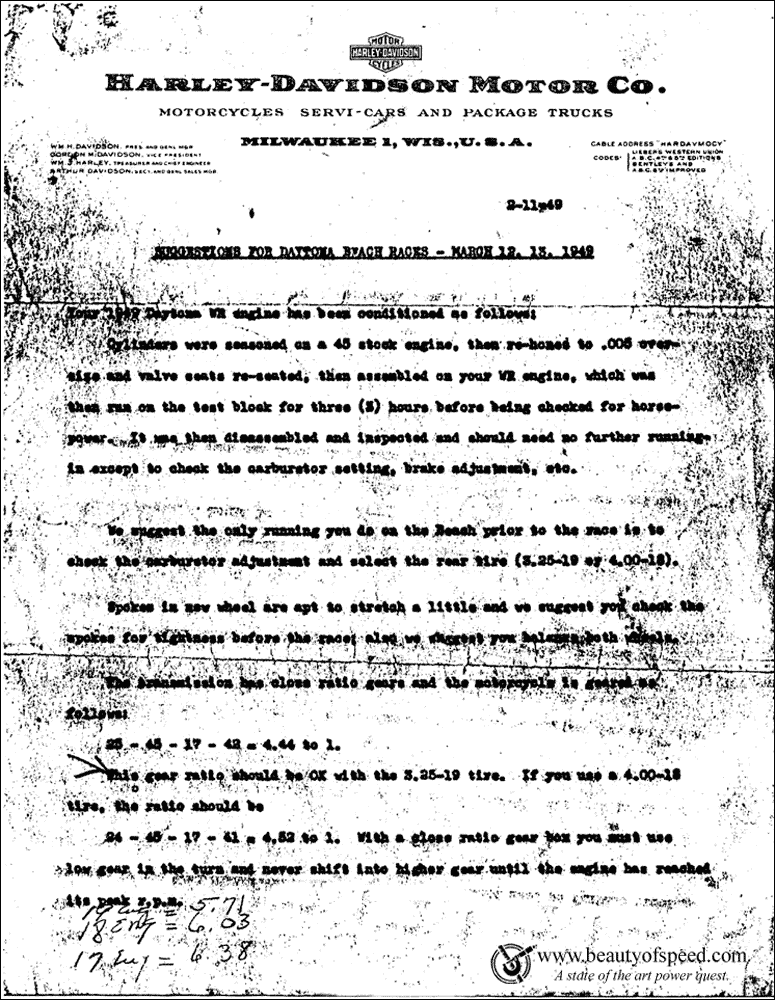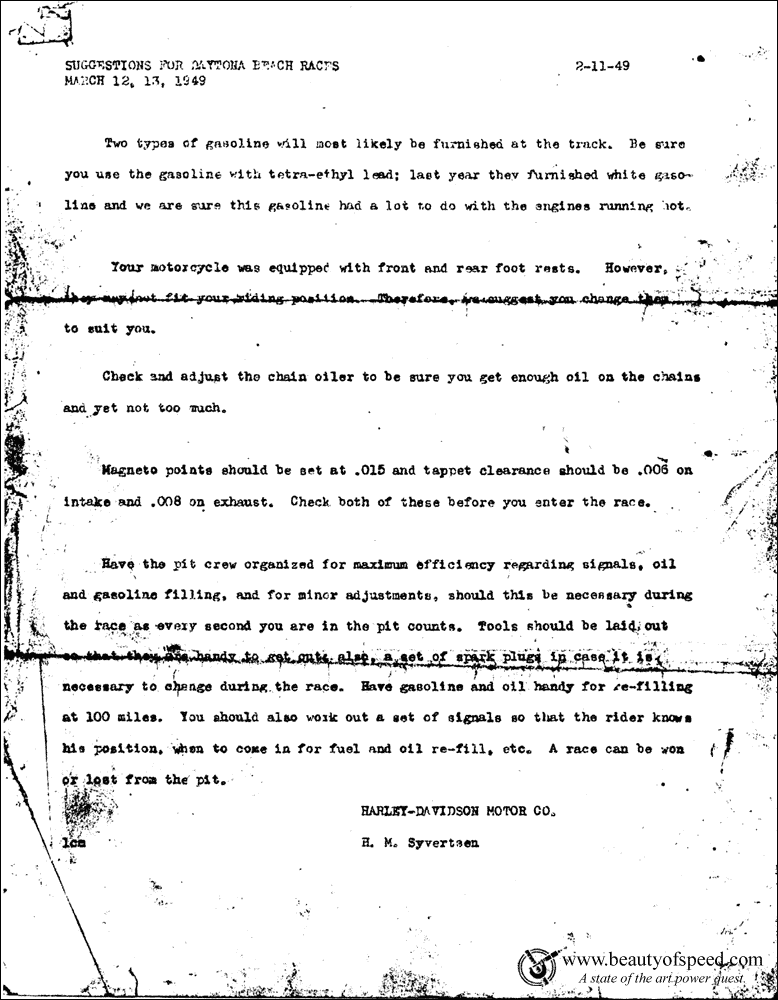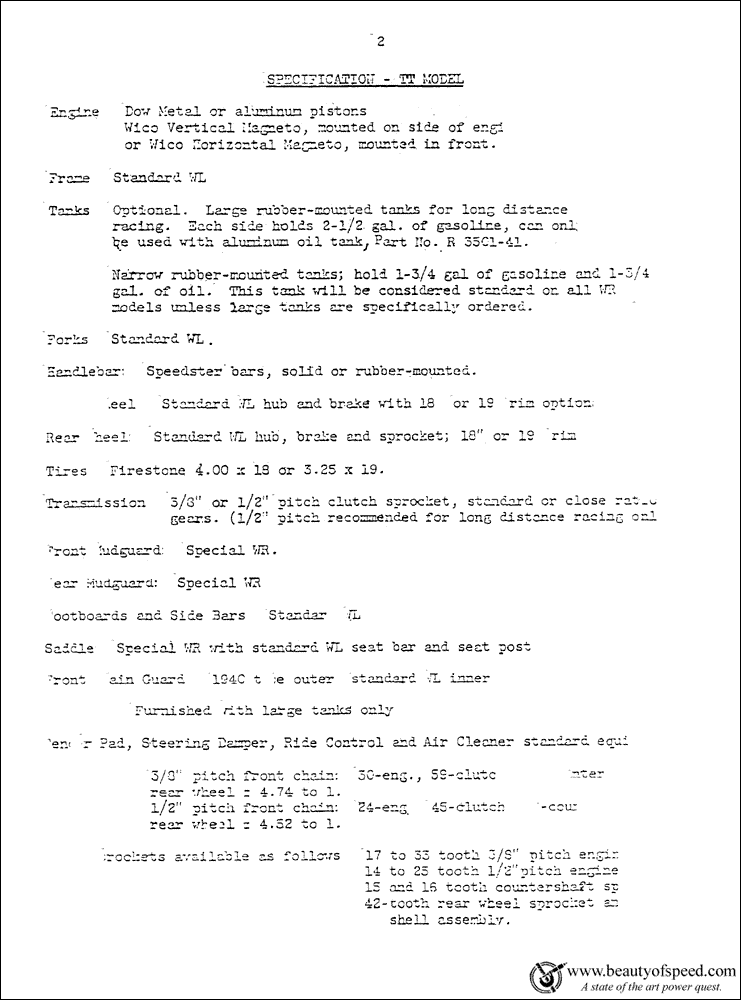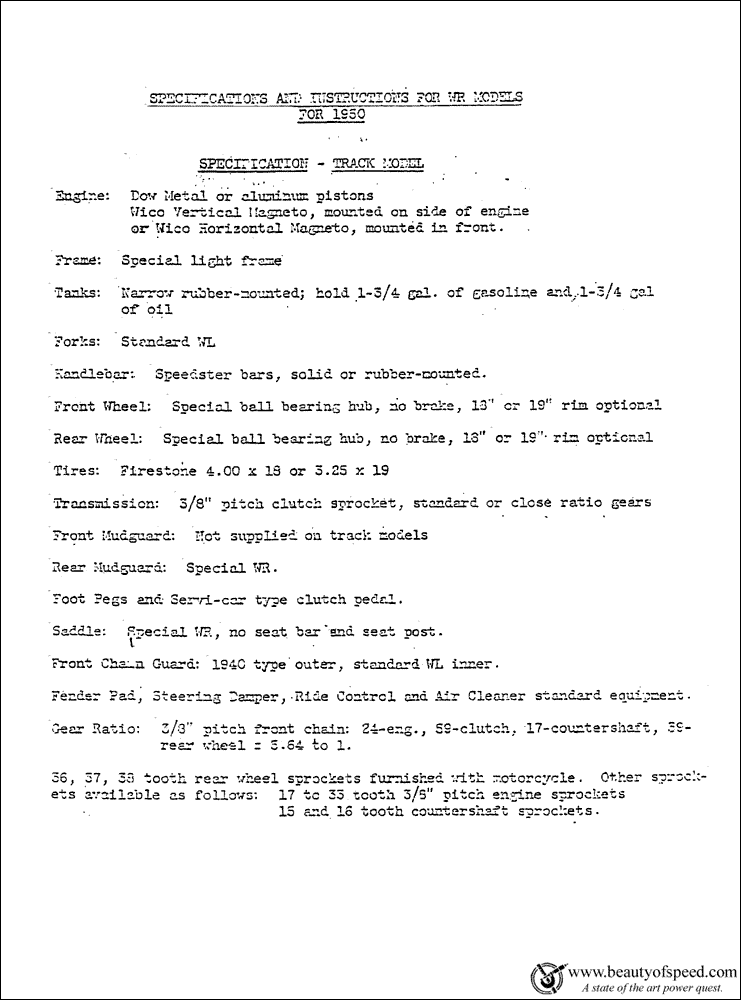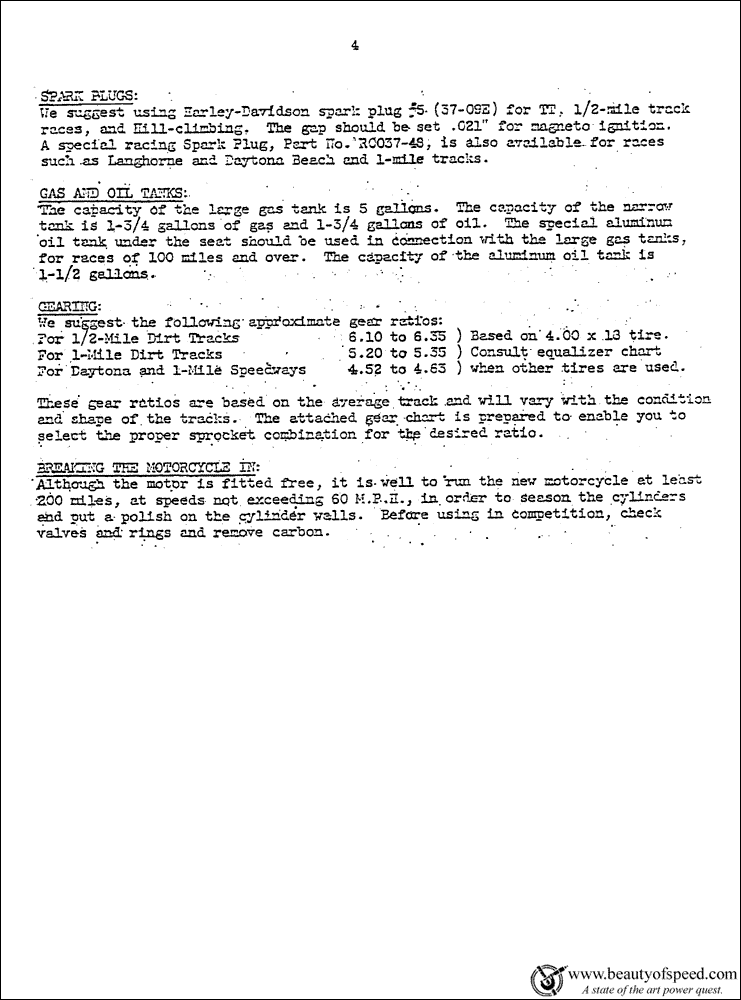Fuel Tanks
1949-1950 Daytona Gas Tanks, fuel/fuel up front (with oil under seat) unlike the fuel/oil up front on the standard WR and WL tanks.
Heavy duty tabs and rubber mounting to the frame. Previous years were kidney shaped like the WL tanks but these are flat against the frame.
Compared here with the a slim WR tank
WL left, WR Daytona centre, WR right.
WR left, WR Daytona right.
5/8" banjo fittings which link the two tanks, same as those on the aluminium oil tank.
Daytona tank strip
I love the Daytona tanks but when it comes to style the standard WR tanks win hands down. The bike's new look:
Top End Wonders
Most of the WR differences to the WL are where you can't see them. The exterior (frame and wheels etc) is made of the same stuff to comply with racing regulations but things get exciting inside the engine.
The gasket surface is machined down. Unlike the WL, there's not much of a step up from the top cylinder fin which maximises compression. The combustion area is smaller and curves in between bore and valves. The clinders are relieved to aid flow.
The inlet valve is bigger and closer to the bore. Both valves are tipped towards the bores - the lifters have a slanted foot to allow this.
Here the relief work is clear. Less is required than if you were relieving your own WL clinders as the WR heads are also relived.
The heads have deeper fins and are sculpted.
Clear view of relief work and shrunken combustion area. The heads aren't stamped with a compression number, just with an informative 'C'.
'R' for RACING baby!
This bike has pop up pistons. Combined with no gasket (just aluminium paint) the gap between the head and TDC piston is almost non-existent.
Thicker flanges.
The clinders have bigger fins than a WL and these have also been drilled. Notice the thicker wall where the exhaust pipe exits.
The rods have a wider web than WL's, they hardly flare out when surrounding the piston pin, but are drilled.
Larger manifold, same as a 74" FL.
And polished.
Wico horizontal mount magneto.
Single fire mechanism.
This is the verner gear that is used to time the magneto.
The gear is driven by the cam gears and transmits through the pin of the insert which sits behind and drives the mag through the D-shaped shaft. The holes are differently spaced to the gear teeth so to advance the firing by, say, 3 degrees you move the gear forward 18 teeth and the pin backwards by 10 teeth.
The bottom end is different too and this being a Daytona TT model is has a larger pitch primary chain. Shown here is a larger sprocket that is going to make this bike FLY!
Subscribe to:
Posts (Atom)




























